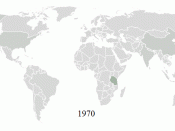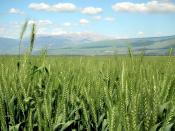The Green Revolution of the 1960s and 1970s, with its package of improved seeds, farm technology, better irrigation and chemical fertilizers, was highly successful at meeting its primary objective of increasing crop yields and food supplies. In Asia, where the Green Revolution package was the most widely adopted in areas of China and India, food production increased substantially in those decades but despite all this, famines and world starvation are still the norm in many parts of the world. Here one must ask a fundamental question, if there's more food being produced in the world then ever before, why is it that there's a continuing increase in poverty and starvation? The fact is that the revolutions leaders did not take into account the culture/geography of theses different nations, the expenses of this new technology, and the massive corporate abuses that where to occur in the development of biotech research.
In Africa, where post Green Revolution technology has failed to improve conditions there, people simply did not look at the history and culture of the land.
Even the World Bank concluded in a major 1986 study of world hunger that "a rapid increase in food production does not necessarily result in food security-that is, less hunger. Current hunger can only be improved by redistributing purchasing power and resources toward those who are undernourished". (Lessens) In other words the poor don't have the money to buy food, increased production is not going to help them and even those that can afford the crop don't want it because it is foreign to the culture of African society, they "traditional, are large consumers of maize" and do not like this new grain.
"Introducing any new agricultural technology into a social system stacked in favor of the rich and against the poor, without addressing the...


